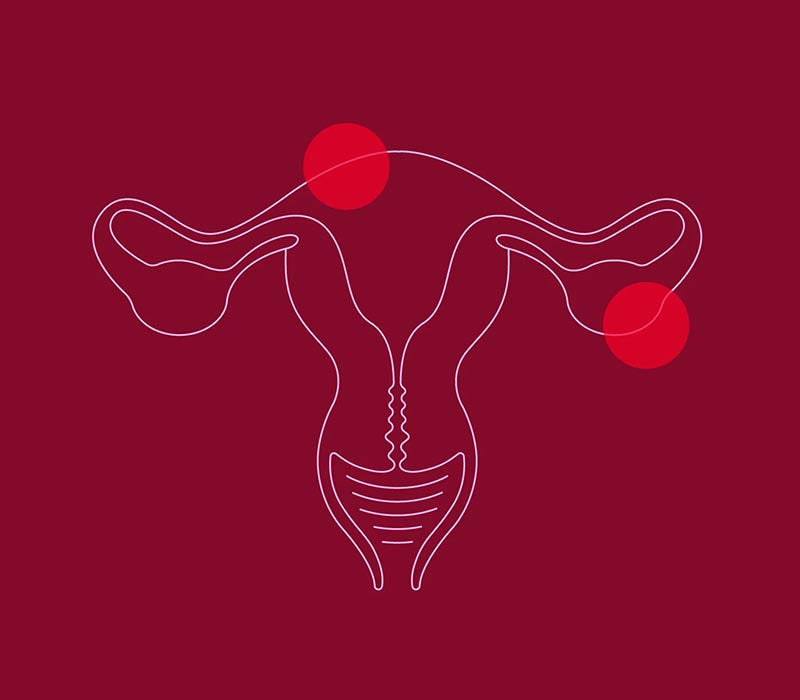With 1 in 9 people with periods affected by endometriosis, chances are you know someone who has it. But do you understand it?
The 101s
- Endometriosis is a condition that affects 1 in 9 people with periods.
- Endometriosis occurs when tissue, which is similar to the lining of the womb, grows in other parts of the body. This tissue has an inflammatory response and causes problems such as pain and scarring.
- Common signs and symptoms of endometriosis include. Pain that stops you on or around your period, pain on or around ovulation and pain during or after sex.
- Latest research shows that the average time to diagnose endo is 6.5 years.
So, what is Endometriosis?
Endometriosis is a condition that affects 1 in 9 people with periods. Endometriosis occurs when tissue, which is similar to the lining of the womb, grows in other parts of the body. This tissue has an inflammatory response and causes problems such as pain and scarring.
Endometrial lesions are most commonly found in and around the pelvic area, including the ovaries, fallopian tubes, uterus, bowel, bladder and on the lining of the pelvic cavity. Less commonly, endometriosis has been found in other unusual parts in the body including the lungs, skin, diaphragm, liver and even the brain.
Signs and symptoms
Some endo warriors have no symptoms at all, while others present with debilitating symptoms, curiously the extent of disease does not correlate to the severity of symptoms.
What symptoms should I look for?
- Pain that stops you on or around your period
- Pain on or around ovulation
- Pain during or after sex
- Pain with bowel movements
- Pain when you urinate
- Having trouble holding on when you have a full bladder
- Heavy or irregular bleeding
- Pain in your pelvic region, lower back or legs
- Bloating
- Fatigue
- Reduced quality of life from ongoing pain, discomfort and psychological effects
- Subfertility/ Infertility
What about prevention or a cure?
Sadly, there is no known cause or prevention for endometriosis. We do know there is a genetic element to endometriosis, so you are 7-8 times more likely to get endometriosis if a family member has a history of endometriosis. The latest research indicates that the average time to diagnosis has decreased from 7 to 12 years to an average of 6.5 years since 2013.
Endometriosis is often misdiagnosed as another condition, such as IBS, or that you have a low pain tolerance, and it is just all in your head.
As a result, many people with Endo suffer in silence.
If you feel you have been misdiagnosed or not taken seriously, it is important to get a second opinion and seek a review from an endometriosis excision specialist.
Education is power and can lead to early detection.
A combination of your symptoms and diagnostic findings can indicate the likelihood of endometriosis. The tests that are used to investigate include:
-
Pelvic examination
-
Ultrasound
-
MRI
-
Laparoscopy - the gold standard, however, is an invasive procedure
Management and treatment
Western medicine
- Pain medication
- Hormonal therapy such as the oral contraceptive pill or LARC’s (Long Acting Reversible Contraception)
-
Laparoscopic surgery to remove endometriosis lesions
Pain Specialists
Endocrinologists
Allied & Complementary medicine
- Naturopathic medicine aims to manage symptoms by reducing inflammation in the body and support the balance of hormones holistically through diet, lifestyle, stress reduction, supplemental medicine and herbal medicine
- Acupuncture & Chinese Medicine
- Massage
- Pelvic pain physiotherapist
- Dietetics/ Nutrition
-
Psychologist/ Counselling
Remember this:
You do not have to suffer in silence.
If you are experiencing painful periods and other adverse symptoms each month please reach out to your health practitioner for support. Endometriosis can be managed very well with the right supportive treatments and a qualified team of practitioners.
For more information and resources, visit Endometriosis Australia. All information in this article has been reviewed by Endometriosis Australia




